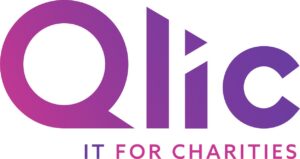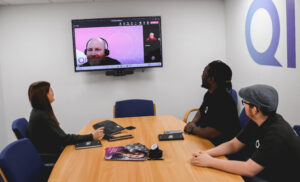Microsoft Teams for nonprofits is a powerful collaboration and communication tool that can be utilized to increase productivity and team engagement among charities. With its robust features, including the ability to create custom channels, post messages, attach files, make video calls, and host virtual meetings, Teams provides an all-inclusive platform for streamlining various nonprofit and charity projects.
The top 7 Microsoft Teams strategies for Nonprofits are:
- Hierachy
- Security
- Communication
- Collaboration
- Cultural Transformation
- Applications & Integrations
- Training
Let’s dive a bit deeper into each one of those amazing benefits your charity can look forward to with a Microsoft Teams licence.
What is Microsoft Teams & how can it help nonprofits?
Microsoft Teams is a powerful communication and collaboration platform developed by Microsoft. It is part of the Microsoft 365 family of products, and provides users with a comprehensive suite of tools to help them stay connected and productive.
Microsoft Teams for charities and nonprofits also offers a range of cost-saving options. For example, they can take advantage of free versions. Overall, Microsoft Teams is an invaluable tool for nonprofits looking to stay connected and productive while reducing costs. With its comprehensive suite of features and cost-saving options, it’s no wonder why so many organizations are turning to Microsoft Teams for their communication needs.
What are the best strategies for maximizing Microsoft Teams for nonprofits?
Nonprofits can maximize the use of Microsoft Teams by taking advantage of a few strategies.
1. Hierarchies within Microsoft Teams
The first strategy to follow is Microsoft hierarchies. Take the time to identify your nonprofit managers, admins and other user profile types. The next step is to set certain permissions for each user on Microsoft Teams. Once both of these steps have been established, use the publish and disable features for members within your nonprofit organisation that don’t require them.
Take a look at the image below for more of an understanding of how to apply hierarchy within your nonprofit team
2. Security on Microsoft Teams
When using Microsoft Teams for charity, make sure to apply sensitive information labels, use safe attachment protection, and password protection. This will ensure the security of your charity’s data.
Microsoft Teams also has a protective software inbuilt called Microsoft Defender. This also helps to fight against any malicious applications and again helps to protect your charity’s sensitive data.
3. Communication via Microsoft Teams
Communicating with your nonprofit team via Microsoft Teams has never been easier. Below are some great ways to stay connected via Microsoft Teams, encourage that the following best practices are used across all channels by users:
- If you receive an email, can post it in your Teams channel and tag people that might benefit from the shared knowledge.
- Showcase the value in utilising instant messages, such as Chats in Microsoft Teams for quick questions to other employees.
- By creating a champions program your employees can guide, teach, and train their peers using it too. (think about how this applies to charities!)
- Implementing Power BI Microsoft Teams insights to monitor charity’s campaign data through Viva Insights.
- Consider the nature of the conversation based on the subject and type of response needed and identify the appropriate medium for communication.
- Encourage using instant messages for urgent questions to get what you need faster.
- When dealing with a sensitive topic, a quick chat on the phone or in person is better than emails back and forth.
- Schedule a more structured meeting or conference call when dealing with multiple people.
4. Collaboration
Microsoft Teams for charities helps to create a structure for organising and finding the right information your NonProfits require. While sharing files and content quickly While setting up notifications for charity team members to talk collaboratively.
Use mobile devices to access Microsoft teams to stay organised and have conversations. Good for NonProfits who have staff out-of-office.
Plan activities more easily with chats, tasks, and shared to-do lists, while making decisions faster with instant polls, and sharing meeting invites directly in a group chat. Good for all-sized NonProfits.
5. Cultural Transformation
Since the covid breakout, lots of companies have resorted to remote working as being the new work environment. Microsoft Teams jumped on this opportunity so a way to keep everyone connected remotely. It also completely formed a different perspective on being productive during the working day, for example helping to prioritise time.
6. Applications & integrations
Microsoft Teams works seamlessly with other applications such as SharePoint for charities and Outlook which makes it easier to organise projects and keep all of nonprofits’ information in one place, on one platform. Nonprofits can take advantage of this integration capability by connecting your tools of choice so that you can manage multiple tasks from one place without having to switch between platforms constantly.
Assign integrations to channels to make them run smoothly.
7. Training
Microsoft Teams for charities has fantastic features when it comes to training. The platform allows you to upload training videos, documents and files which you can then share with your nonprofit team.
As well as sharing the training materials with your nonprofit team, you can also assign the training to individual members, making it more efficient and productive for members in different roles.
When onboarding new employees at your charity, it’s good having all of your training documents under one complete training martial. It makes everything easy to access.
Final Thoughts
In conclusion, Microsoft Teams for charities is a great platform and tool to aid in everyday nonprofit day-to-day tasks. The 7 strategies we spoke about in this blog, to maximise your impact on Microsoft Teams, are just the beginning of the features the platform has to offer.
Want to find out more about Microsoft Team for nonprofits and how it can be tailored to your organisation? Book a FREE consultation with one of our IT experts by clicking the button below.






